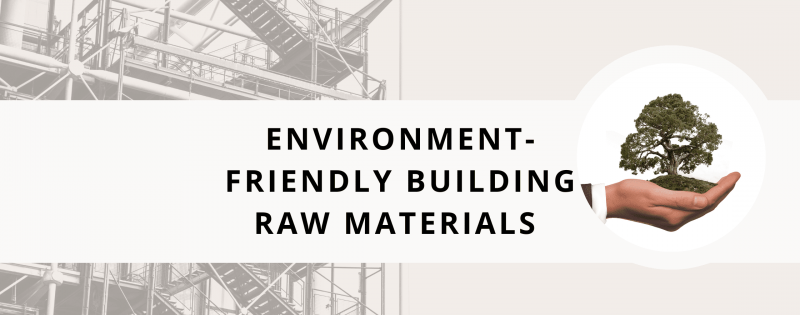
Environment-friendly Building Raw Materials
October 6, 2022|Posted in: Uncategorized
Go green is the tagline of the construction industry today! Green building is very much being used in construction these days and apart from the technologies, raw materials play an important role on the environment all throughout the life cycle of a building. Today, several construction companies are embracing new-age energy-efficient technologies & using alternative construction materials as well.
Here’s a recap on the most commonly used environment-friendly building raw materials by luxurykeralaflats.com, the no. 1 real estate portal for buying, selling or renting flats in Kerala.
Recycled plastics
You can ensure a construction lifespan of 30-50 years by using recycled plastic in buildings. Mostly used in roof, floor and ceiling tiles, insulation of the building indoors, structural lumber and PVC windows and more it can significantly reduce greenhouse gas emissions. Plastic can also be used in concrete and bricks to make them stronger and durable.
Bamboo
High strength and low weight make Bamboo useful as a renewable and versatile building material for scaffolding, bridges and houses particularly in low-cost housing projects. Thanks to its environment-friendly, sturdy and fire-resistant properties, it has become a perfect flooring material, particularly in earthquake-prone regions.
Reclaimed or recycled wood
One the most used type of building material, recycled or reclaimed wood from old houses like doors, panelling door & window frames, beams & pillars are aesthetically pleasing & easy to use. It also has a much lower environmental impact than harvesting new timber.
Ferrock
Made out of recycled materials like steel dust Ferrock is stronger than concrete and is carbon-neutral or chemically inactive. It’s a highly eco-friendly building material which substantially reduces carbon emissions in the drying and hardening process.
Aerated concrete
A complex blend of fly ash, lime, cement, gypsum, Aluminium powder and water, aerated concrete is a lightweight, precast building material that offers insulation as well as fire and mould-resistance to buildings.
Fly Ash concrete
A concrete made up of fly ash (a coal combustion residue) it‘s also known as Cellular light weight concrete. It has high thermal insulation and low consumption of mortar when used in construction.
Rice husk ash concrete
An ideal admixture for producing concrete, the Rice Husk Ash (RHA) is obtained after burning of rice husks. The material has strength and durability, which make it perfect for use in the construction sector.
Bagasse particleboard
Bagasse is the dry pulpy residue obtained after the extraction of juice from sugarcane. This lightweight, economical material is an excellent alternative for wood in particleboards and can be used for laminated floors.
Rammed earth
In many low-cost construction projects rammed earth is being used in India. Lightly moistened earth is mixed with relatively low clay content and tamped heavily to compact it. Using rammed earth has several advantages in the process of construction as it has good thermal mass, temperature & noise reduction, and is usually low-maintenance.
It’s interesting to note that even luxury flats in Kochi are being made out of these environment-friendly building raw materials. Contact us at luxurykeralaflats.com to know more on flats in Kerala.
Leave a Reply
*